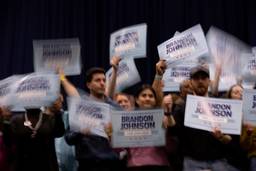The Power and the Story
Violence is integral to far too many narratives of masculinity
Jude Ellison Sady Doyle

A man walks into a movie theater, his hair oddly dyed. He walks out, then walks back in, in costume. Some nerd, some superfan, watching his big movie. Good for him. At least it’s not Captain America; those spandex costumes a few months ago were not fun to see. So, the nerd sets down two grenades. A special effects guy, maybe? Maybe he’s getting paid for this. The gas grenades go off. And then he starts shooting.
One thing you will notice, about this sequence of events: The man gets more important, and vastly more powerful, at each progression of the story. By the end of it, he’s become one of America’s most famous — and most feared — men. You will hear him spoken of, every time you walk into a coffee shop or a bar, for the next week. One phrase, usually, repeated between strangers: He said he was the Joker.
But James Holmes could have called himself anything, depending on the movie and the year. He could have said he was Hannibal Lecter, Travis Bickle, Leatherface, the Green flipping Goblin. In the aftermath of all this — which is more dramatic than even most mass murders; there was the voice mail message left in a goofy Batman voice, the apartment filled with Batman paraphernalia, the apartment (need we be reminded) rigged with explosives, should police attempt to enter — the standard take is to ruminate about our violent pop culture. About how Heath Ledger’s Joker represented the terror of randomness, and how he radiated the same scary-intense glamour the late Ledger always did radiate in his roles, and about how, well, gosh, movies are filled with violence, aren’t they? With killers, even. Someone could get the wrong idea.
Not mentioned, however: The fact that this “someone” would almost certainly be a man.
If we weren’t looking at pop culture here, we might look at place: James Holmes struck in Aurora, Colorado. A few miles and 13 years away, in Columbine, Colorado, two young men — Dylan Klebold and Eric Harris — massacred 13 of their fellow high school students, injured 24 others and killed themselves. There, too, we looked to pop to inform evil: Violent video games, Marilyn Manson and some imaginary teen-Goth conspiracy called the “Trenchcoat Mafia.” (I was being home-schooled in Ohio at the time; friends who went to public school told me they were not allowed to wear black outfits, or long coats, for the rest of the school year.) With Seung-Hui Cho in Virginia, who killed 32 and wounded 25, some insisted he’d imitated the movie Oldboy. (He apparently hadn’t seen it.) And in the case of Jared Loughner in Arizona, who killed six people and wounded 14, including Rep. Gabrielle Giffords, we hardly even had pop. But the leftists among us (including, sadly, me) were happy to immediately, and strenuously, blame Sarah Palin.
We look for what got into them, what they imitated, what outside forces hit them. But Gloria Steinem, in 1999, pointed out that it might not come from pop culture, but from our culture. She dubbed the Columbine shooting a “supremacy crime,” and noted that “hate crimes, violent and otherwise, are overwhelmingly committed by white men who are apparently straight. The same is true for an even higher percentage of impersonal, resentment-driven, mass killings like those in Colorado.”
Even given the small sample above, it holds up. Cho breaks the sample on the racial axis, but he’s vastly outnumbered by white men. All are men. And most expressed, pretty strongly, that they did not have the power they felt they deserved — or, more precisely, that others had more power than they did. Cho put it down to class: “Your Mercedes wasn’t enough, you brats. Your golden necklaces weren’t enough, you snobs. Your trust fund wasn’t enough.” Loughner had odd, idiosyncratic resentment towards government, which he apparently associated with people holding power over him: “The longest war in the history of the United States. Goodbye. I’m saddened with the current currency and job employment. I had a bully at school.”
Klebold and Harris may not have been bullied — that initial narrative has since been shown to be untrue — but we do know they didn’t just want to be killers, they wanted to be impressive, powerful, famous killers. And Harris, at least, violently resented the fact that others had any power over him whatsoever. When caught stealing, he reflected that he ought to be above the law: “Isn’t America supposed to be the land of the free? How come, if I’m free, I can’t deprive a stupid f — ing dumbshit from his possessions if he leaves them sitting in the front seat of his f — ing van.”
We don’t yet know whether Holmes fits this pattern. But here’s something extra: George Sodini, who killed 3 and injured 10 in Pittsburgh, directly blamed women: “[It] seems many teenage girls have sex frequently. One 16 year old does it usually three times a day with her boyfriend. So, err, after a month of that, this little hoe has had more sex than ME in my LIFE, and I am 48. One more reason. Thanks for nada, bitches! Bye.”
None of this is to say that men are “inherently” violent. Men aren’t “inherently” anything, nor are women. For more on this spiffy little theory of mine, see: The entirety of feminism. But it is to say that violence is one of the accessible, even somewhat encouraged, paths to power for a man. Women are not typically taught to see it as an option.
And, of course, the Joker is a white man. So are Travis Bickle, Hannibal Lecter, Leatherface, and the Green Goblin. For as long as our culture envisions violence as power, and envisions power as male, our nightmares will be male ones. But so will our heroes be, for that matter. Batman is (you might have guessed, from the name) a fellow. A rich, white, apparently straight one, too. Of the stories about The Dark Knight Rises I’ve come across, most concern the Aurora shooting. But another is about how the nerds, the superfans, are enraged by a certain plot twist. It turns out Catwoman, not Batman, shoots and kills the main villain. This makes Batman look ineffectual, they say; it makes him look weak. After all, he’s the guy.
The guy’s supposed to be the one to pull the trigger.
Jude Ellison Sady Doyle is an In These Times contributing writer. They are the author of Trainwreck: The Women We Love to Hate, Mock, and Fear… and Why (Melville House, 2016) and was the founder of the blog Tiger Beatdown. You can follow them on Twitter at @sadydoyle.








